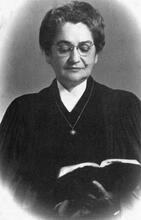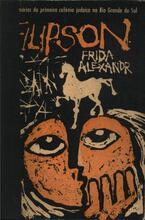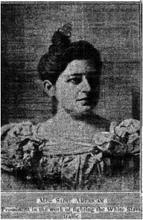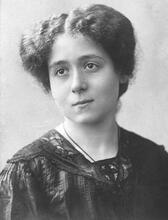Ze'enah U-Re'enah
The Ze’enah u-Re’enah is a compilation of the Torah and Haftarot, among other sources, also offering exegeses with weekly portions. Although other editions were printed earlier, the oldest surviving version comes from the early seventeenth century and was written in Yiddish. Subsequent editions show the evolution of Yiddish language and intellectual trends over the next several centuries. At an unknown point, the Ze’enah u-Re’enah began to be used as a fundamental text for women within Ashkenazi communities, where the work was universally popular.
Ze’enah u-Re’enah (Hebrew צאינה וראינה), Yiddish pronunciation: tsenerene. A rendering in Yiddish of the Pentateuch, the Megillot (Five Scrolls of the Bible), and the Haftarot (portions from Prophets read in synagogue after the Sabbath reading from the Torah she-bi-khetav: Lit. "the written Torah." The Bible; the Pentateuch; Tanakh (the Pentateuch, Prophets and Hagiographia)Torah). In the Pentateuch, the discourses are based on a selection of versicles and topics from the weekly portion treated in an exegetical and at times homiletically inclined manner, drawing from numerous sources, primarily the A type of non-halakhic literary activitiy of the Rabbis for interpreting non-legal material according to special principles of interpretation (hermeneutical rules).Midrash (especially Bereshit Rabbah) and the Lit. "teaching," "study," or "learning." A compilation of the commentary and discussions of the amora'im on the Mishnah. When not specified, "Talmud" refers to the Babylonian Talmud.Talmud, Rabbi Solomon ben Isaac; b. Troyes, France, 1040Rashi and his interpreters and many other exegetes, with R. Bahya ben Asher ibn Hlava (Spain, thirteenth century) in the lead.
Though there is clear preference for peshat (literal meaning), the work does not refrain from combining it with derash (interpretation of Scripture). Other sources are added in the rendering of the Lit. "scroll." Designation of the five scrolls of the Bible (Ruth, Song of Songs, Lamentations, Ecclesiastes, Esther). The Scroll of Esther is read on Purim from a parchment scroll.Megillot, which, although also based on selected versicles and topics, is closer to the original narrative. The Haftarot are mainly rendered in a consecutive translation interspersed with short sporadic quotations from the text.
Editions
The oldest extant edition of the Ze’enah u-Re’enah was published in 1622 in Hanau and not in Basel as stipulated in the frontispiece, which refers to three previous editions (one printed in Lublin and two in Cracow) as already out of print. Over two hundred and ten editions have since appeared (some with illustrations), first in Central and Eastern Europe and later also in the United States and Israel.
While the various early editions show few linguistic differences, the editions of the late eighteenth century became a kind of laboratory for the Yiddish language. Some nineteenth-century editions contain textual variations that bear the impact of Hasidism or the Jewish Enlightenment; European movement during the 1770sHaskalah. During that century several parts of the Ze’enah u-Re’enah were translated into other languages or made the object of various kinds of adaptations. Complete translations into English and Hebrew first appeared in the twentieth century.
The name of this extremely popular Yiddish work derives from the beginning of the versicle “O maidens of Zion, go forth and gaze …” (Song of Songs 3:11) which appears in the frontispiece after the title: חמשה חומשי תורה מגילות והפטרות בלשון אשכנז (The five books of the Pentateuch, the Megillot and the Haftarot in Yiddish). Notwithstanding the feminine form of its adopted name, the work was originally intended by its author, R. Jacob ben Isaac Ashkenazi (sixteenth century) of Janow (Poland), for men and women alike, as stated in the oldest extant edition: “This work aims to enable men and women … to understand the word of God in simple language,” since they lacked a sufficient mastery of the Hebrew language to understand the original.
Women and the Ze’enah u-Re’enah
Although the Ze’enah u-Re’enah gained universal acceptance among Ashkenazi Jews and was often recommended to readers of both genders by rabbinical and spiritual leaders, at a certain point in time unknown to us the book began to be considered as the principal and fundamental reading matter for women. Intended primarily for the Sabbath and holidays, the appropriate sections were mainly read at home either silently and individually or aloud for the benefit of other members of the family. These women’s readings became an inseparable part of the yearly cycle’s customary practice in the traditional home throughout the Ashkenazi Lit. (Greek) "dispersion." The Jewish community, and its areas of residence, outside Erez Israel.Diaspora, at least until World War II.
For many generations the Ze’enah u-Re’enah played a major role in the informal education of women and their children by broadening their knowledge of many and varied Hebrew sources, leading them in the ways of Jewish thought and behavior and presenting them with a treasure of stories and narratives. The impact the Ze’enah u-Re’enah made on its readers’ spiritual world, on their reading habits, on their literary taste and on their written and spoken language still awaits research, together with many other aspects of this important work.
Translations:
The Weekly Midrash Tz’enah Ur’enah: The Classic Anthology of Torah Lore and Midrashic Commentary, translated by Miriam Stark Zakon. New York: 1994.
Sefer Tzena urena, […] translated from the Yiddish into the Holy Tongue [by] Rabbi Sh. A. Hershkovitz, Bene-Berak: 1974.
Ze’enah u-Re’enah: A Commentary on the Pentateuch, Haftaroth and the Five Megilloth by Rabbi Yaakov ben Rabbi Yitzchak Rabino of Janow. Translated in[to] Hebrew […]. edited, annotated and prefaced by Rabbi Moshe Menachem Kozak, Bereshit, Part I (up to Hayyei Sara), Jerusalem: 1974.
Ze’enah u-Re’enah, Book of Genesis, Jacob Ben Isaac Ashkenazi of Yanov. Translated (into Hebrew) with a critical commentary and notes by Israel M. Hurwitz. Edited with an Introduction by Joseph P. Schultz. New York: 1985.
Scholarship:
Erik, Max. History of Yiddish Literature (Yiddish). Warsaw: 1928, 223–230.
Neuberg, Simon. “Pragmatische Aspekte der jüddischen Sprachgeshichte am Beispiel der Zenerene.” Jidische schtudies 7, Hamburg: 1999.
Schultz, Joseph P. "The" Ze'enah U-Re'enah": Torah for the Folk." Judaism 36, no. 1 (1987): 84.
Shmeruk, Khone. “The East European Versions of ‘Tsene-Rene’” (Yiddish). For Max Weinreich on His Seventieth Birthday, London, The Hague, Paris: 1964, 336–319.
Shmeruk, Khone. Yiddish Literature in Poland, Historical Studies and Perspectives (Yiddish). Jerusalem: 1981, 147–164.
Turniansky, Chava. “A Haskala Interpretation of the Cene-rene.” Hasifrut 2 (1971): 835–841.
Turniansky, Chava. “Translations and Adaptations of the ‘Tsene Urene’” (Yiddish). Sefer Dov Sadan, Jerusalem: 1977, 165–190.

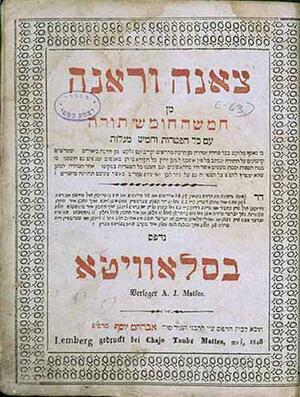
![blue.jpg - still image [media] blue.jpg - still image [media]](/sites/default/files/styles/medium/public/mediaobjects/blue.jpg?itok=RkdKmpf6)


